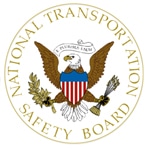 WASHINGTON – The National Transportation Safety Board’s go-team will leave New York City this week after completing the necessary on-scene investigative work into the cause of the derailment of a Metro-North passenger train on Dec. 1. The NTSB will continue to gather factual information and investigators will return to New York as needed for follow-up work.
WASHINGTON – The National Transportation Safety Board’s go-team will leave New York City this week after completing the necessary on-scene investigative work into the cause of the derailment of a Metro-North passenger train on Dec. 1. The NTSB will continue to gather factual information and investigators will return to New York as needed for follow-up work.
The following investigative update is provided regarding the Dec. 1 derailment:
Over the weekend, investigators completed the mechanical inspection of the train and found no anomalies. As stated last week, there were also no anomalies found with the tracks or with the signal system. Investigators examined car 6222, the lead car in which the engineer controlled the train. The “dead-man” switch, a foot-pedal on the floor of the cab that must be depressed to keep the train moving was evaluated. The pedal moved and released as expected. No anomalies were noted. In addition, the control key switch worked as designed. The team also conducted a site/distance test and found no problems with visibility.
As a result, at this time, the NTSB believes that if positive train control technology was installed on this line and train, it would have required the engineer to slow the train to an appropriate speed or stop the train in the event the engineer did not do so, likely preventing the derailment. The NTSB has been advocating for PTC for more than 20 years and it is on its Most Wanted List of transportation improvements. More information can be found at http://www.ntsb.gov/safety/mwl8_2012.html.
Investigators completed interviews with all crew members. All have been cooperative and forthcoming. All said it was a normal run until shortly before the derailment sequence.
Investigators are still awaiting results of crew drug tests and cellphone records.
Investigators also interviewed the engineer of a train that passed the accident train, 8808, near Riverton at about 7:11 a.m. That engineer said the headlight on train 8808 was on high and the engineer did not dim his light as is required by Metro-North.
Mechanical examinations, such as shop testing of the of dead-man switch, inspection and testing of speed sensors and tachometer rings, the brake control unit, and the propulsion controller from the control car have been completed. No anomalies were found.
Ongoing activities include interviews with passengers, Metro-North employees who were riding on the accident train and first responders. Records continue to be gathered.
Investigators will also take 3-D scans of the damaged cars and locomotive for use in a digital accident re-creation and for detailed measurements.
The NTSB would also like to talk to passengers on the train that derailed to learn about what they experienced and causes of injury. Our goal is to ultimately make future improvements in the design of passenger rail cars.
Passengers on Metro-North train 8808 on Dec. 1 can contact the NTSB by email at eyewitnessreport@ntsb.gov.
Related News
- Chairman Pauli Announces Retirement, SMART-TD celebrates his career
- New Mexico Local 1687 sets new precedent with Red Apple Transit
- Tentative Agreement Reached With TransitAmerica Services (TASI)
- New CSX conductor improvises to save a life
- SMART News: Protecting Railroad Retirees’ Future
- More Than a Story: SMART-TD’s Women’s History Month Highlights Legacies in the Making
- Tentative Agreement Reached in Boston
- Assembly, No. 1672
- Historic short-line agreement proves workers are stronger with SMART-TD at their side
- SMART-TD’s Public Comment Opposing CSX’s “Zero-to-Zero” Push